Successfully catching speckled trout begins with understanding their behavior and biology. This fact sheet reveals everything you need to know.
More...
Hi, my name is Devin! Speckled trout are my favorite fish to catch and – if you're here – probably yours, too.
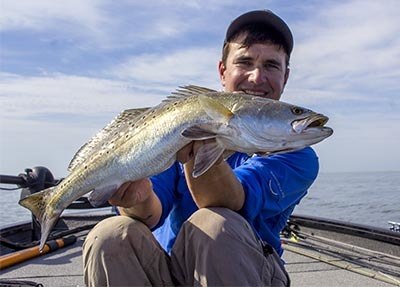
I've spent years chasing them and have learned a lot along the way.
Some fishing trips are easier than others, some harder, and during my fishing career I've caught a good deal of fish.
In fact, I have over 1,000 tagged speckled trout swimming around the Gulf Coast, mostly in Louisiana.
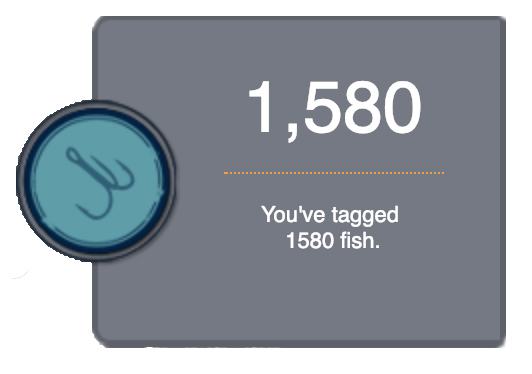
A screenshot of my tagged fish count in my TAG Louisiana dashboard.
And that's only the fish I've tagged. Consider the rest that have been caught and released (or kept for a fish fry).
The knowledge I learned to catch all those fish is what you will find in this ultimate fact sheet (or it will be linked here).
Before we get started, let me make a couple notes:
The information here pertains to speckled trout in general, but with a slant on Louisiana's inshore fishing, since that is where the majority of my experience is.
After that, you may want to bookmark this page for future reference, or consider subscribing to my newsletter to be informed when new guides are published or updated.
Understanding the Foundational Knowledge of Speckled Trout
But all of that fishing success wouldn't have been possible if I didn't possess a solid understanding of speckled trout behavior and biology.
So, it's my suggestion that, before learning fancy techniques or buying new fishing tackle, you take time to learn the foundational knowledge of speckled trout so you can also achieve your own fishing success.
That's what you'll find below.
Speckled Trout Names
I’m not going to bore you with the same old rigamarole of “speckled trout are technically this kind of fish” or “their scientific name is blah blah blah” or whatever. I don’t think it has a relevant impact on your inshore fishing knowledge.
So you do know, the scientific name for speckled trout is cynoscion nebulosis. I am only bringing this up because I was watching a fishing show in which one of the anglers said the scientific name and someone else in the boat thought it was the Cajun word for speckled trout. I about fell out of my chair laughing. Don’t be that guy.
Speckled trout are also called many other names. Names like spotted sea trout, yellow mouths or weakfish. But here in Louisiana, they are speckled trout, also lovingly referred to as “specks”. Some old timers call them “speckles”, but it’s rare to hear this.
Throughout this guide I'll be using their various names.
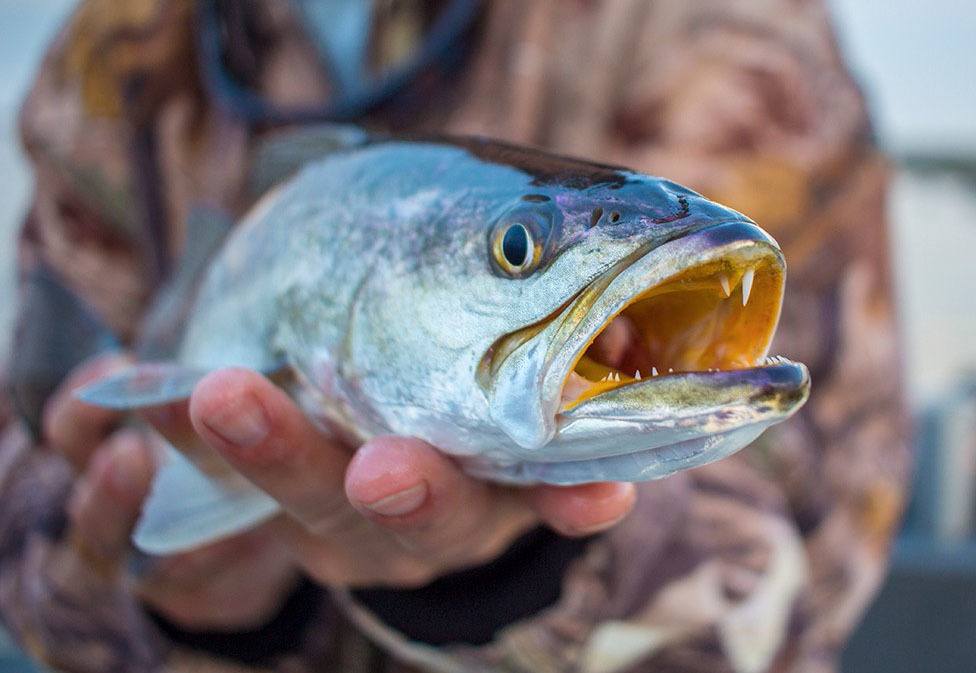
Speckled Trout Appearance
Speckled trout are silver/gray colored with black dots, or speckles, along their back and fins.
They usually have one or two canine teeth in the front of their mouth. They also have a purple sheen.
Range & Habitat of Spotted Seatrout
Speckled trout can be found from nearly-fresh water to full strength saltwater.
I have caught them in blackwater ponds deep inside Delacroix where I also see bluegill and largemouth bass.
Conversely, I have caught them on the edge of the Gulf of Mexico.
They rarely seem to relate to cover (meaning an object rising from the bottom of the water, such as a bed of grass, natural gas platform, etc.) so much as they do moving water. I will touch more on this later.
Speckled trout seem to stay inside the estuary they were born and raised in.
Rarely do they shove off to far away waters though it has happened.
I have tagged speckled trout before releasing them back into the water and all of them, so far, have been recaptured within the same estuary.
Every once in awhile you will read of a speckled trout making a grand journey across the Gulf Coast, but it is rare.
It’s my opinion that speckled trout, like most animals, are creatures of habit and know exactly where they are going to feed, rest and spawn.
They aren’t going to leave what they know.
How big do speckled trout get?
Speckled trout in Louisiana tend to be smaller, but far more numerous than anywhere else in the world.
The minimum length for speckled trout is 12″ (these usually weigh less than a pound) and the daily creel limit is 25 per person.
It’s not uncommon to catch limits of speckled trout in the two to five pound range.
If you love eating fish then speckled trout is the fish for you! You can catch and keep a lot of them and there is no slot size, meaning there is no maximum length.
Males make a drumming noise with their air bladder. So if you catch a speck and it’s going nuts making croaking noises it is a male.
Females usually grow larger in both length and weight. That’s why you always hear large speckled trout being referred to as “big girls” much like largemouth bass.
Bigger speckled trout are harder to catch and true non-schooling speckled trout are large and behave nothing like their younger counterparts.
Speckled Trout Creel Limits For Louisiana
The creel limit for speckled trout in Louisiana is 25 per angler each day. The minimum length requirement is 12 inches.
There is an exception: 15 fish daily take and possession limit, with no more than two spotted seatrout exceeding 25 inches total length, regardless of where taken, in a defined area of Cameron and Calcasieu Parishes in southwestern Louisiana.
Always check the Louisiana Department of Wildlife and Fisheries for the latest information on speckled trout creel limits.
Speckled Trout Life Cycle
Understanding the life cycle of a speckled trout is key to successfully fishing for them.
A successful hunter has learned the patterns of his quarry and knows where to look for them. It’s no different for an inshore angler!
You need to know not only what the trout are doing during each season of the year but why they are doing it. When you have achieved this level (and it will eventually come) you will be thinking more like the fish and seeing things from their perspective.
Where does life begin for a spotted sea trout?
Life starts out for speckled trout inside a tiny egg not much bigger than a grain of sand. This egg floats near the surface of the water and into the marsh, where it hatches. This happens from late spring to early fall.
A baby speckled trout eats voraciously, doubling and tripling its size in short order. It must eat. It eats everything it can. For if it doesn’t, it won’t grow fast enough to become big enough to survive. It must obey its instinct to eat!
These tiny babies will hide in whatever cover they can get into. Aquatic grasses like coontail, turtle grass and widgeon grass provide cover for them from predators, such as redfish, largemouth bass and larger speckled trout.
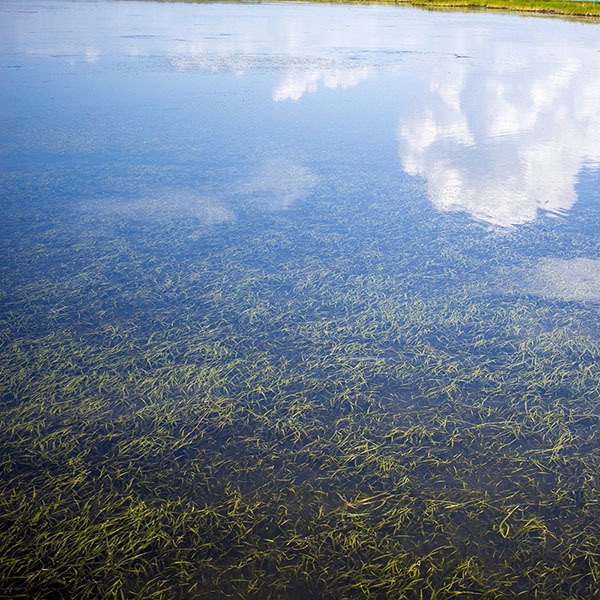
It should come as no surprise that the most productive estuaries have freshwater on one end (with which aquatic grass thrives), full-strength saltwater on the other end and dozens of miles in between.
Depending on when the trout hatched, he or she may be large enough to spawn the following year. One reason we have a 12″ length limit in Louisiana is to facilitate the trout spawn.
By the time a 12″ trout is harvested it has spawned at least once and therefore replaced itself and made more trout.
As long as everyone is abiding by the law, it is virtually impossible to harm the speckled trout population in Louisiana with a rod and reel.
Once a speckled trout is large enough to spawn, it will join drumming aggregations in the spring and summer to release and fertilize eggs to be dispersed into the marsh. At this point in time the cycle is complete and will begin all over again with the tiny egg.
It’s a common myth that speckled trout spawn in the same way largemouth bass do, on spawning beds. This is not true.
Instead, speckled trout spawn in massive schools, beginning at sundown and continuing until midnight. As mentioned earlier, male specks have air bladders they use to croak, or drum.
They will co-locate in deep passes with moving water and make drumming noises. So many of them will drum together that the sound is reported as being like a loud roaring noise that can be heard with a hydrophone or through the deck of an aluminum boat.
This drumming attracts female specks.
Once co-located, the males and females will spawn. The females release their eggs, aided by male trout rubbing/beating against their sides. The male trout will then fertilize those eggs.
Fertilized eggs will float towards the surface and the tidal water will sweep them deeper into the estuary where the eggs hatch.
Also, unlike largemouth bass, the speckled trout spawning season is much longer than the bass spawning season. Bass usually only spawn during the spring, but specks spawn from spring to fall.
How fast do speckled trout grow?
Speckled trout growth rates seem to vary depending on which organization you speak to. But here a few things for sure:
- Trout will eat as much as they can to grow as fast as they can.
- Once they hit the 5 – 7 pound mark they start to become more solitary and school less. They also eat less.
- Male speckled trout get the short straw: they don’t live as long or grow as large as females.
- Trout don’t eat much during the winter time because their metabolism is so slow.
Fish are cold-blooded in a way. If they are really cold, their metabolism is really slow and they become lethargic. They are less likely to eat and if they do it is because the prey is so easy to eat.
It should come as no surprise that the fish don’t grow as much, if at all, during the winter time.
As a result, speckled trout born in the spring time have a huge advantage over speckled trout born in the late summer.
Speckled Trout Seasonal Patterns
Speckled trout behavior is different throughout the year.
Their habits and location change based upon the seasonal pattern. In consequence, this affects how and where we fish.
There is no point in discussing where to fish or which lures to use without first noting the season.
These seasonal patterns are based upon different phases of speckled trout behavior, not calendar months. These patterns can shift to the left or right on the timeline, happening sooner or later.
NOTE: No living being on Earth is less affected by the seasons than humans.
Humans have become so disconnected from nature that we live in our own artificial reality, replete with its senses of “comfortable” and “uncomfortable”.
If it gets too cold, we simply turn the heat on. If it becomes too hot, the air conditioning is turned on.
If we are hungry, we go to the refrigerator. If we need light, we simply flick a switch.
Our needs are not dictated by the conditions, but if they were our lives would be radically different.
Fish swimming in the marsh do not have the luxuries we do, so it’s important to understand the seasons and how they affect speckled trout. Without this perspective there is no point in continuing.
How do speckled trout spawn?
During the spawn specks are on the “outside” of the marsh in saltier water. This is because their eggs can’t float in the fresher water of the interior marsh, so they spawn where the water is salty enough.
The spawn is in full swing from water temperatures of about 77 to 86 degrees.
They are running in schools and eating as much as they can. In Louisiana the spawn runs from about April to August. During the months of April to June it is common to see seagulls diving on shrimp being pushed to the surface by feeding speckled trout.
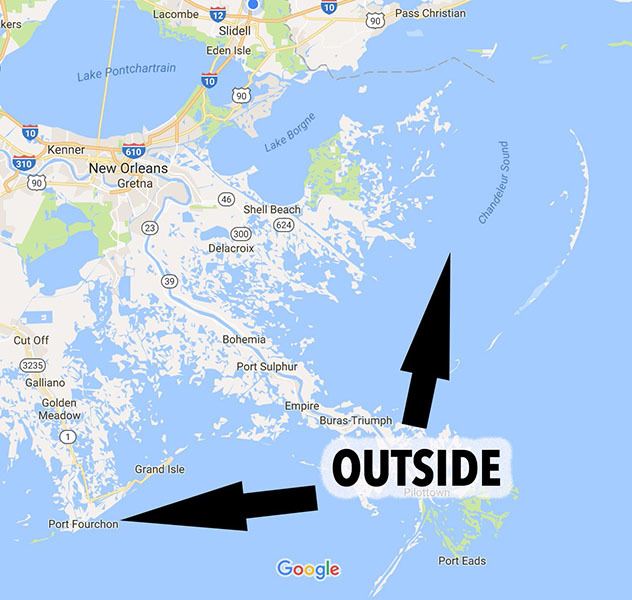
NOTE: Some specks do stay inside during the summer.
These trout are the exception to the rule and there are not enough of them to consistently find good trout action during the summer.
When trout are spawning they are burning a lot of energy.
It can be an intense activity and when they are done it is time for them to feed and rest. The best time for them to feed is first thing in the morning, when it is coolest. Let me explain why:
These fish are cold-blooded and incapable of regulating their body temperature to the degree that me and you do. We can warm ourselves up and cool ourselves down. Fish? Not so much.
Once the summer sun comes up and warms the water, speckled trout will become too hot and will instead find refuge, where they rest, digest their food and await spawning time.
They’re not going to be out feeding.
You will see many anglers talk about “beating the heat” on summer fishing trips.
This is because they are launching as early as possible, no later than 5am, and catching their fish before 9-10am.
Is it possible to catch limits of speckled trout at high noon? Yes. I have done it. However, they are almost always smaller in size.
To learn more about the habits of summertime speckled trout, it is recommended you watch this webinar.
Post-Spawn
Just as the spawn is triggered by a changing photo period and water temperature, it is ended by a changing photo period and water temperature.
The days become shorter and the water temperature begins cooling down.
During this period speckled trout stop spawning.
As they do they will become more scattered and feed more erratically. Jumping from spot to spot is key during the post-spawn for speckled trout.
Also referred to as the “dog days of summer”, the post-spawn can be very difficult to fish. It is hot and feeding windows are very narrow.
During this time anglers may target other species like redfish.
This seasonal pattern is short and usually about 30-45 days long, taking place in September.
Fall Feast
The fall season officially begins when the water temperature reaches about 74 degrees. Speckled trout know winter is coming. They begin doing two things:
- moving further “inside” the marsh
- eating a lot to fatten themselves up
During winter there is an onslaught of cold fronts that lower water temperatures and levels. Trout can’t feed as well during this season, so the time to feed is during the fall!
The fall shrimp migration coincides with this time as well. Shrimp growing up inside the marsh are now mature enough to head for the Gulf of Mexico and continue spawning.
Since shrimp are traveling in large masses it's a matter of time before a school of speckled trout locates them. This allows for “one stop shops”, meaning anglers fill their coolers with a quick and easy limit in one spot.
Fall fishing is some of the best fishing of the year!
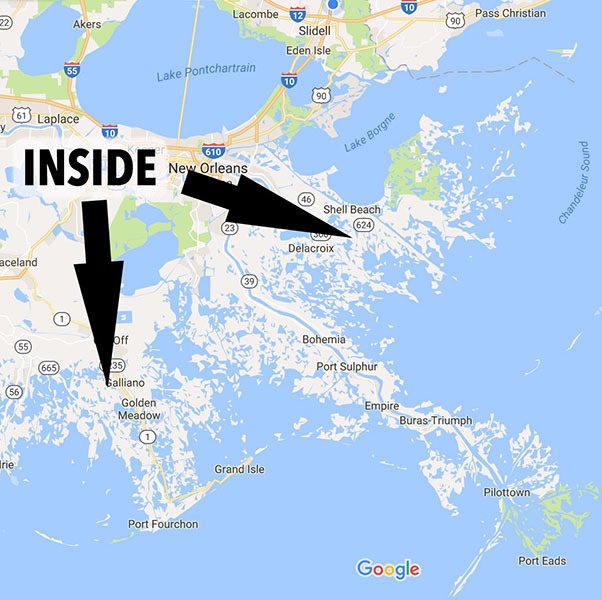
Winter Pattern
This pattern runs from about December to March. It is the pattern that eludes most anglers and, if you have had difficulty catching fish during this season, then probably one of the reasons you purchased Inshore Fishing 101 in the first place.
The winter pattern kicks off when the water temperature reaches about 53 degrees. By this time the shrimp have completely left the marsh, but there is still plenty of food for the trout to eat. This food comes in the form of bottom-dwelling fin fish, like cocahoes and croakers.
(NOTE: This does not mean speckled trout will turn down a live shrimp!)
This is where most anglers fail to adapt. These bottom-dwelling fin fish are not schooled up, but scattered over a large area, like an oyster reef. Anglers accustomed to catching a lot of fish in one spot are disappointed when they only catch a couple, if anything at all. The key to overcoming this is drifting over an area or fishing multiple spots in a short amount of time.
Remember that trout are susceptible to extremes in water temperature! Trout eat whenever there are warm spells. If the water gets cold enough they will become lethargic and hide in deep water.
They still eat under these conditions, but very slowly and deliberately. When the water is low and cold, trout are schooled up again in these “deep holes”.
They may not come out to eat until the afternoon, after the sun has warmed the water a little.
See the striking difference between winter and summer fishing? In the summer you want to have a line in the water before the sun comes up. In the winter you may want to wait awhile.
You would almost never launch the boat at 5am during the winter and almost never fish for trout at 2pm in the summer.
Now you can see why understanding these seasonal patterns is so important.
Spring Pattern
Pre-spawn takes place during March to April. Much like the post-spawn, it is a transition period for speckled trout and lasts roughly 30 to 45 days. It somewhat overlaps with the beginning of the spawn.
During the pre-spawn specks become more active due to warming water temperatures and longer days. They are scattered about the marsh and aren’t schooling as much.
A warming water temperature of 68 degrees tells trout the spawn is coming. Then the trout will make their way back to the “outside” to begin a new spawn.
Fishing for speckled trout during this time can be tough, seeing that trout are scattered and on the move. It’s not uncommon for anglers to chase redfish or other species during this season.
However, it has happened that we see seagulls diving on shrimp during this season.
This is a surefire sign of specks that are eating up! This is covered later in the course.
Speckled Trout Feeding Habits
Speckled trout are a schooling species. It’s their instinct to hang out in numbers and for a couple different reasons:
- It is safer for them to do so.
- When one finds food, they all find food.
Consider reason #1: If they get attacked by a shark, dolphin or huge redfish, they each stand a better chance of surviving as an individual.
The odds of the trout to the left or right of them being eaten instead of them are much greater.
Imagine this: You are playing tag with your friends. If you try to make it back to “base” by yourself you stand a much greater chance of getting tagged.
But, if you approach base with a group of friends, the person who is “it” can only get one of you before the rest safely make it to base.
Consider reason #2: It’s easier for them to eat baitfish when there are fewer places for the baitfish to run because all of the escape routes are covered by other speckled trout. Let’s go back to the tag analogy:
Imagine you are “it” and it’s your job to tag other people before they make it back to base. It’s a tough job. But that tough job is made much easier if there are a few dozen of you doing the job.
Picture a school of shrimp and pogies floating with the current when they drift around a point and into the mouths of a few hundred speckled trout! They wouldn’t stand a chance.
When speckled trout feed, they feed in numbers and they feed voraciously. That’s just a fancy word that means they go nuts when they are eating.
In fact, if you get on a good speckled trout bite you can literally throw anything in the water and they will attack it.
Deep diving crankbaits are almost never used for speckled trout, but they hit this one as soon as it entered the water.
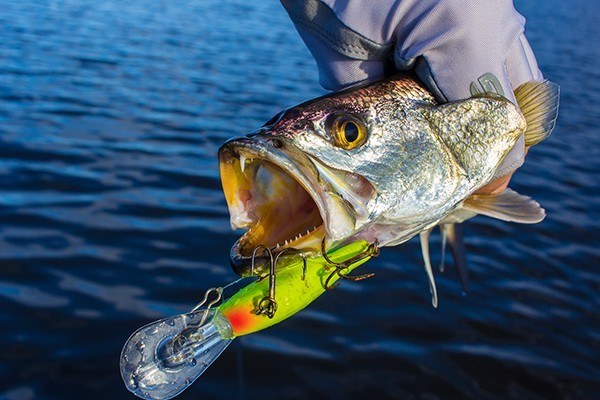
Now keep in mind we are talking about schooling speckled trout. Large and old specks are solitary and eat in narrow windows and very selectively. They have as much in common with “school” trout as a blue marlin does. The focus of this course are the school speckled trout.
What do spotted seatrout eat?
It’s a good question.
I loved answering this question about alligators when I used to take tourists into the swamp. They’d inquire what baby alligators liked to eat and I’d respond with something like, “insects, frogs, small fish, etc.”. When they’d ask what Winky, our 14 footer, liked to eat I’d simply say “Whatever the heck he wants!”
It’s not much different for speckled trout.
They will eat what they can fit in their mouths. Speckled trout don’t have hobbies. They don’t have aspirations. They don’t have a mortgage to pay.
They live to eat and spawn. That’s it.
Specks that come over the bow of the boat will typically throw up their stomach contents, usually several shrimp and a fin fish or two. I have caught speckled trout that were 14″ long and had 12″ mullet sticking out of their mouths.
Keep in mind they still ate the shrimp under the popping cork I caught them on!
One time, I had a trout cough up a katydid in the livewell!
Speckled Trout Prefer These Baitfish:
I am telling you this so we can set the stage for the kinds of lures and tackle you need to have in your arsenal. You can guess that you will be using a finfish or shrimp imitation lure.
Specks are also known to eat things like small blue crabs, but this is rare.
Where do speckled trout eat?
This is the million dollar question.
And I have the million dollar answer:
Speckled trout like to eat where the water is clean, moving and has bait.
Every single time I have lit the water on fire with incredible trout action the water was clean, was moving and had bait.
This doesn’t mean the water was crystal clear like an aqua spring in Florida, but clean enough that the trout can see their prey and their gill plates aren’t bothered.
By “moving water” I mean water that is moving fast enough it is visible. A floating object should be moving along the surface of the water, not staying stationary.
If it is anchored down you should be able to see water moving around it, such as a crab trap’s float.
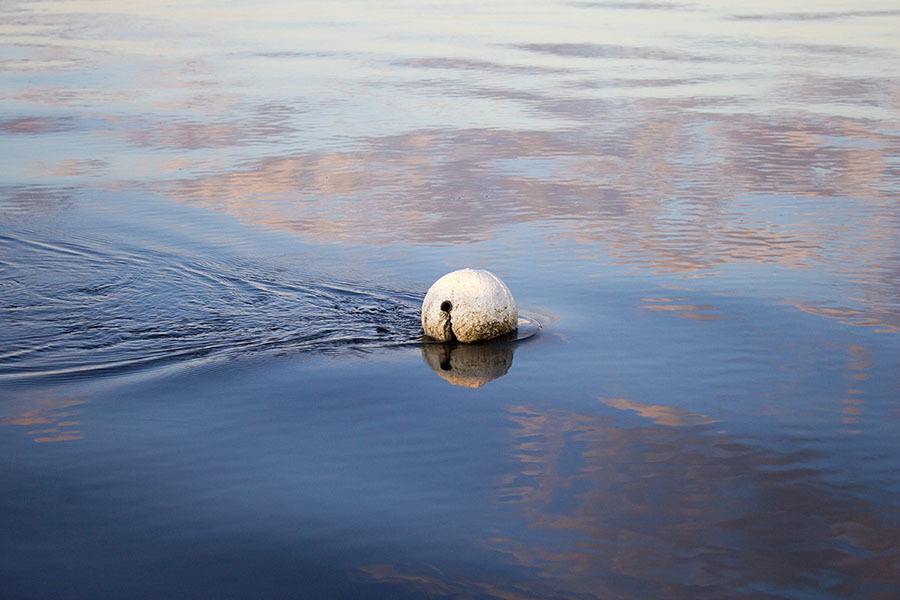
And lastly, there should be some kind of indicator there is bait nearby. This could be in the form of bait slicks, created by oils released from bait killed by speckled trout underwater.
It could also be in the form of actual bait bursting the surface of the water. It’s not uncommon to see trout jump out of the water chasing minnows or shrimp. If you do see this it is a guarantee you are about to whack ’em!
But where do you find clean, moving water with lots of bait?
In the following sections I will go into this in detail.
But, before we do, let’s recap and then go over redfish.

Not in any appreciable numbers. You’re better off fishing much farther outside where it’s saltier.
Do you catch specks @ PAC in the summer months?
Thanks, Troy!
Super informative! I’ve been fishing the Pointe Aux Chenes area for specs for about 35 years and learned some new things and also connected several dots in my mind while reading this article! Great read!!
Thanks for reading!
Informative article, I’m learning about specks and looking forward to fishing hackberry area.
Excellent thanks they are the highest fish on the food chain for Omega 3 which should be on everyone’s list
Nope, not to my knowledge. Of course, we don’t really have weakfish here in Louisiana. I’ve only seen them on the east coast.
Eating bait, or you’re looking at mullet.
best information I have ever read
Pinfish are great for specks. Especially when cut in slivers They look like swimming fish. They are also great for reds this way.
what about small pinfish? any luck using them?
Depends on where you are, but baitfish you should be paying attention to include croaker, bay anchovies, gizzard shad, and brown shrimp.
Devin, what baitfish are hatching now( April-may)?
Glad you enjoyed it. Thanks for reading!
Glad for the recap. Nice to go over or recap knowledge factors each year.
Thank you, Lisa!
Great post